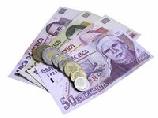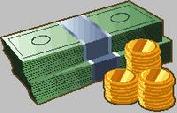
 |
|
| Financial Terms | |
| normal capacity |
|
Information about financial, finance, business, accounting, payroll, inventory, investment, money, inventory control, stock trading, financial advisor, tax advisor, credit.
Main Page: money, credit, payroll, inventory control, investment, inventory, financial, financial advisor, |
Definition of normal capacity
normal capacitythe long-run (5–10 years) average production
Related Terms:CARs (cumulative abnormal returns)a measure used in academic finance articles to measure the excess returns an investor would have received over a particular time period if he or she were invested in a particular stock. Abnormal returnsPart of the return that is not due to systematic influences (market wide influences). In Cumulative abnormal return (CAR)Sum of the differences between the expected return on a stock and the Debt capacityAbility to borrow. The amount a firm can borrow up to the point where the firm value no Lognormal distributionA distribution where the logarithm of the variable follows a normal distribution. Normal annuity formThe manner in which retirement benefits are paid out. Normal backwardation theoryHolds that the futures price will be bid down to a level below the expected  Normal deviateRelated: standardized value Normal probability distributionA probability distribution for a continuous random variable that is forms a Normal portfolioA customized benchmark that includes all the securities from which a manager normally Normal random variableA random variable that has a normal probability distribution. Normalizing methodThe practice of making a charge in the income account equivalent to the tax savings Standardized normal distributionA normal distribution with a mean of 0 and a standard deviation of 1. CapacityThe maximum volume of products or services that can be produced given limitations of space, Capacity utilizationThe proportion of capacity that is able to be utilized to fulfil customer demand for products capacitya measure of production volume or some other activity base  expected capacitya short-run concept that represents the ideal capacitysee theoretical capacity net cost of normal spoilagethe cost of spoiled work less the estimated disposal value of that work normal cost systema valuation method that uses actual normal lossan expected decline in units during the production process normal spoilagespoilage that has been planned or foreseen; is a product cost practical capacitythe physical production or service volume that a firm could achieve during normal working hours with consideration given to ongoing, expected operating interruptions productive capacitythe number of total units that could be theoretical capacitythe estimated maximum production or Normal (bell-shaped) distributionIn statistics, a theoretical frequency Spoilage, abnormalSpoilage arising from the production process that exceeds the normal Spoilage, normalThe amount of spoilage that naturally arises as part of a production Excess CapacityUnused production capacity. Debt CapacityAn assessment of ability and willingness to repay a loan from anticipated future cash flow or other sources. Related to : financial, finance, business, accounting, payroll, inventory, investment, money, inventory control, stock trading, financial advisor, tax advisor, credit. |